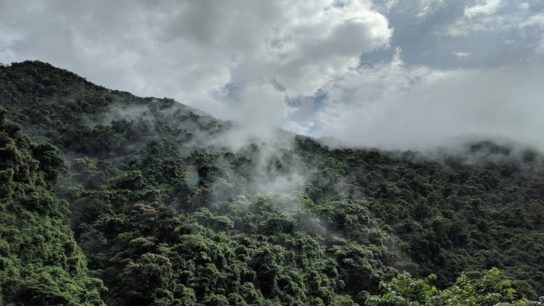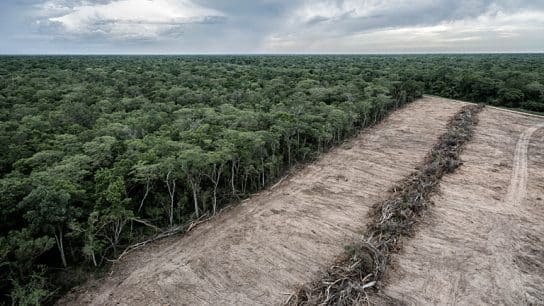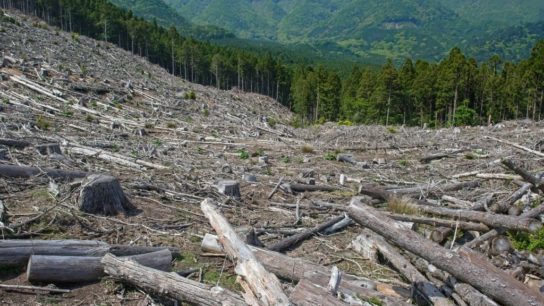Collaboration among researchers, policymakers, and civil society is needed to reverse biodiversity loss in Europe and create a nature-positive future for the continent. The European Union-funded project BIOTraCes employs an innovative approach to the problem, focussing on tackling the root causes of biodiversity loss, emphasizing equity and justice for both people and the planet.
—
Biodiversity in Europe is facing a significant and ongoing decline. Data from the European Environment Agency indicates that nearly 40% of the 463 bird species in the European Union (EU) are classified as having poor or bad conservation status. Approximately 5% of habitats require improvement, and 50% of dunes, bogs, mires, and fens are in a state of poor conservation.
The main pressure on biodiversity in our continent comes from the agriculture sector, which accounts for 21% of the impact on habitats and species, followed by urbanization at 13% and forestry at 11%.
“Growing economies coincide with increased exploitation and extraction of resources, which leads to climate change, land use, and alteration,” said Esther Turnhout, a partner in the EU-funded project Biodiversity and Transformative Change for plural and nature positive societies (BIOTraCes) at the University of Twente in the Netherlands. “This, in turn, results in biodiversity loss.”
The Benefits of Transformative Change
To address biodiversity loss in Europe, we must first and foremost tackle its root causes, Turnhout argues. Speaking with Earth.Org, she said current biodiversity conservation policies focus on nature management measures to reduce pollution, relocate people, or enhance protection, rather than what is causing large-scale biodiversity loss.
“Rather than solely relying on these protective measures, we should consider the actual root causes of biodiversity destruction. We must delve deeper to address not just the symptoms of these problems but also their underlying causes,” she said.
This approach is part of the theory of transformative change, which refers to a profound and fundamental shift in how societies function and govern themselves. It aims to address interconnected challenges such as biodiversity loss, climate change, and social inequality. Unlike incremental changes that involve building up on what we are already doing, transformative change involves a comprehensive reorganisation of societal structures, values, and behaviors.
This process can start with grassroots innovations or through top-down reforms of political and economic systems. It aims to create a more sustainable and equitable society through four key principles: recognising diversity, focusing on marginalised groups, addressing political barriers, and empowering local communities.
“What BIOTraCes is trying to do with transformative change is to shift some of the views of what people think about nature and biodiversity, and in a way, through doing so, they’re attempting to help people integrate nature into their lifestyle or business practices,” said Jeanne Nel, a partner in BIOTraCes who leads the Biodiverse Environment Programme at Wageningen University & Research in the Netherlands.
“The project also aims to address barriers to people who want to live more sustainable and just lifestyles,” she added.

The Power of Local Communities
Eleven partners from Germany, Hungary, Italy, Lithuania, Portugal, Romania, Spain, Sweden, and the Netherlands are collaborating to ensure the success of BIOTraCes. The researchers are studying sectors that significantly improve biodiversity in nine case studies across Europe.
One of them is in Amsterdam’s Voedselpark, where a coalition of citizens and social movements work hand in hand to integrate nature with food production, aiming to prevent industrialization in their communities. They are co-designing a regulatory framework for a community land trust, ensuring a unified approach that includes decision-making rights for local residents.
“We are working with communities that want to implement these practices and biodiversity-friendly methods in the ways they live, such as their housing or how they grow the food they eat. We are working with them to explore how we can create policy spaces that make this easier for them,” Nel told Earth.Org.
“Many policy departments operate in silos, and yes, everyone tends to prefer straightforward and technical problems with simple solutions, even if those solutions are ultimately not true solutions in the long run,” said Turnhout, adding that it is challenging for people to view economic and industrial policy as tools for biodiversity conservation, and likewise to consider social inequality and social justice as factors in biodiversity. “This is extremely difficult, but it must happen,” she said.
What’s Next?
BIOTraCes, set to conclude in November 2026, will develop a handbook for transformative change, highlighting the perspectives of local initiatives conducted during the project and the grassroots organizations behind them. It will also include results from the analysis of indirect drivers of biodiversity loss, such as structural factors that create obstacles to sustainable decision-making and behavioral changes.
According to Nel, who guides politicians in implementing participatory processes that are equitable to tackle biodiversity loss, we also need to “connect local actors to higher-level processes that are more influential, where there can be a shift in mindsets and deeper concern for local communities.”
Collaboration and interaction also need to occur among local initiatives with similar objectives so that the results, knowledge, and solutions discovered in the projects can be amplified and utilized by others. BIOTraCes is collaborating with several projects addressing similar issues as part of a cluster focused on transformative change for biodiversity, offering scientific knowledge, solutions, and case studies on the subject.
“All these projects take different viewpoints, but all of them are somehow connected to local case studies,” said Nel. “I think that’s really interesting as you see what are similar barriers and issues. I believe that then, through this, you can gain a much clearer idea of exactly where it is at a higher level that you need to push. We now know that there isn’t just one silver bullet that will solve it; it’s about multiple perspectives.”
Featured image: European Science Communication Institute gGmbH.
This story is funded by readers like you
Our non-profit newsroom provides climate coverage free of charge and advertising. Your one-off or monthly donations play a crucial role in supporting our operations, expanding our reach, and maintaining our editorial independence.
About EO | Mission Statement | Impact & Reach | Write for us














